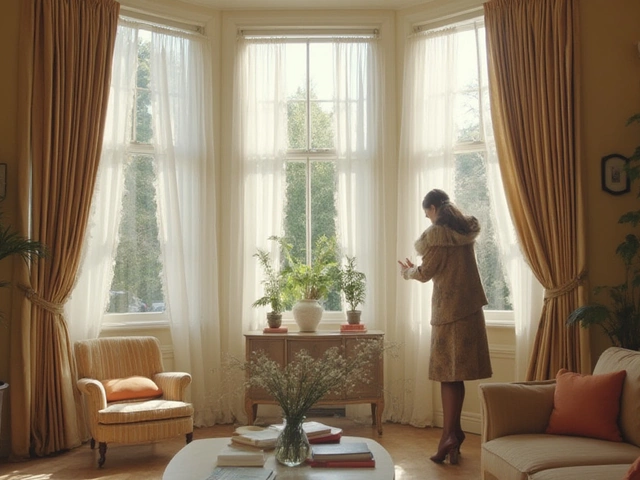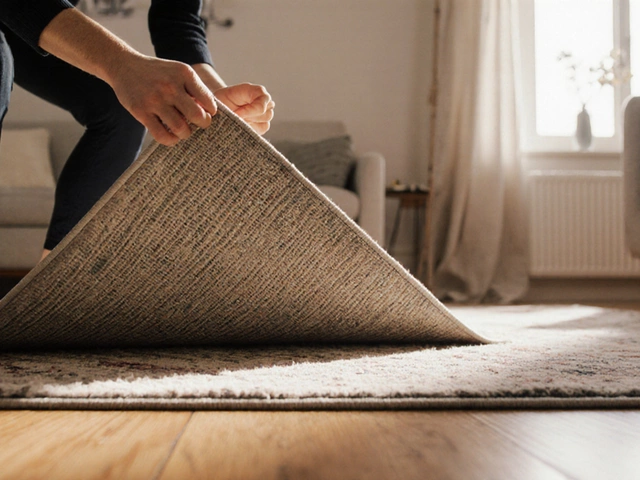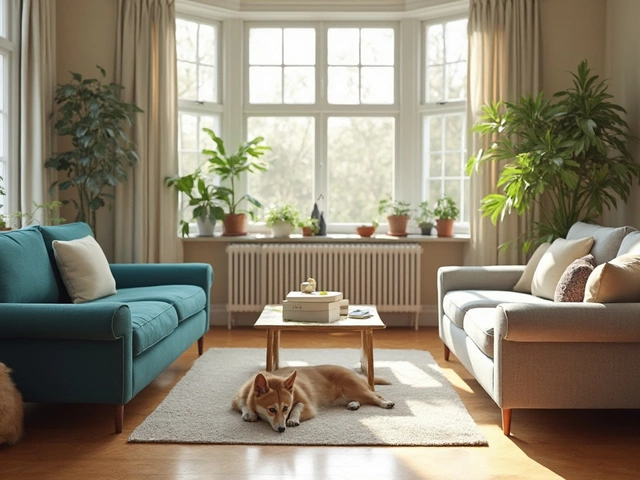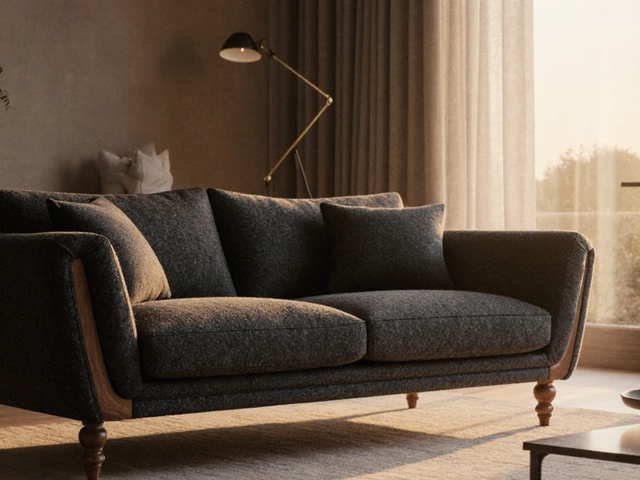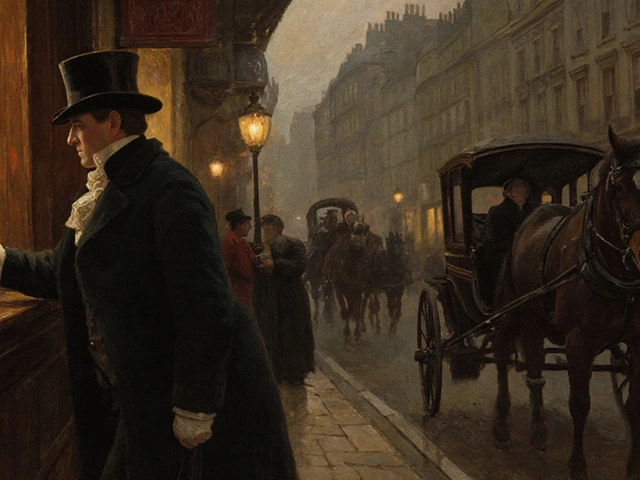Shelving Things: What It Really Means and Why It Matters
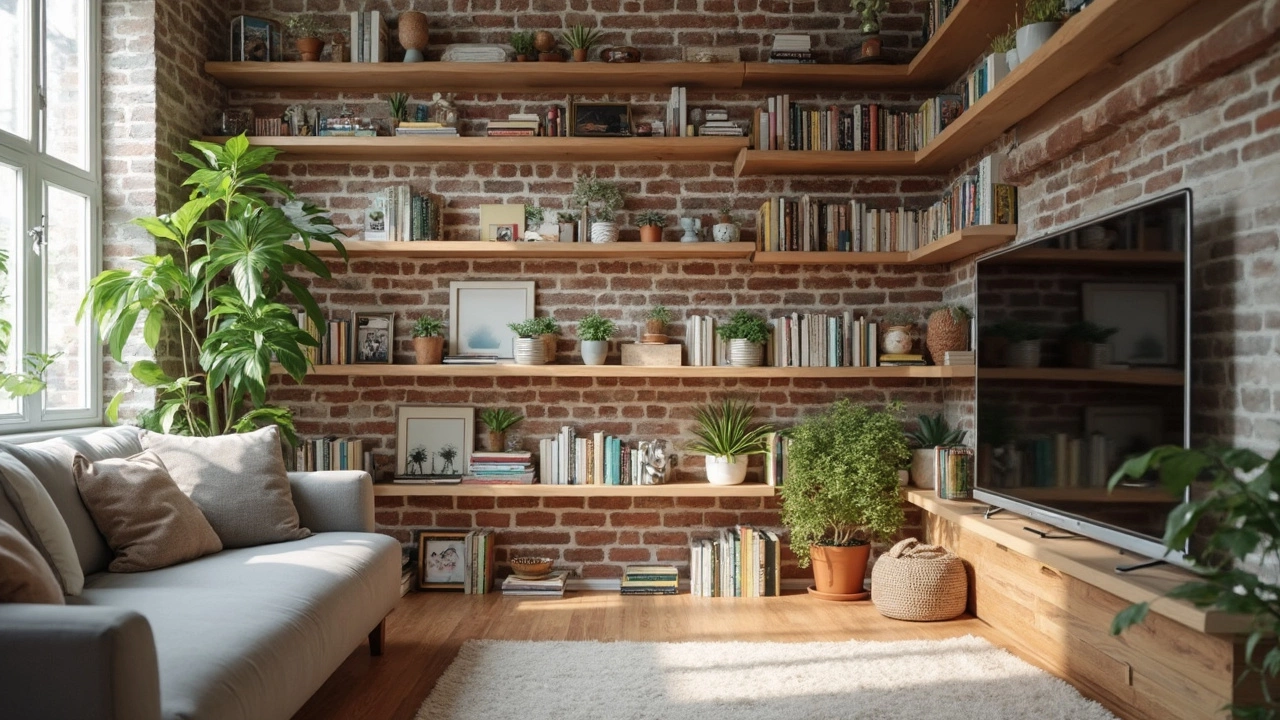
Shelving things sounds simple, but there’s a lot going on behind that phrase. At its core, shelving just means putting things on shelves to get them off the floor and into a place where you can actually find them later. Most people do this without thinking—books go on the bookshelf, plates end up on kitchen racks, shoes might get tossed on a hallway organizer. But real shelving is about more than just dumping everything onto a flat surface.
If your place ever feels cluttered, half the battle is not having good spots to put stuff. That’s why learning to use shelving to your advantage can totally change how your space looks and feels. With a few basic tips, you can turn chaos into something that feels calm and put together. And you don’t need to buy fancy furniture or become some kind of organization expert to get it right—just a bit of know-how helps a ton.
- What Does Shelving Things Mean?
- How People Use Shelving Every Day
- Benefits of Good Shelving
- Common Shelving Mistakes
- Creative Shelving Ideas
- Making Shelving Work for You
What Does Shelving Things Mean?
When people say "shelving things," they’re almost always talking about physically putting items on a shelf. It sounds straightforward, but there’s more to it. In every room—kitchen, bathroom, living room, garage—shelving plays a big part in keeping things organized and making them easy to get to.
Shelving is basically about giving items a proper home. You might use shelves for books, pantry food, cleaning supplies, or shoes. Stores use shelving to display products so you can actually find what you need without hunting everywhere. Even libraries use a system called the Dewey Decimal System to sort books on shelves, making sure everything’s in its right spot.
Let’s get specific—there are tons of different types of shelving. Some common ones include:
- Wall-mounted shelves (great for saving floor space)
- Floating shelves (no visible brackets, super clean look)
- Freestanding units (move them around anywhere)
- Adjustable shelves (change the height as your needs shift)
Most people don’t realize how crucial shelves are until something is misplaced or the space feels chaotic. A survey by the National Association of Professional Organizers found that 54% of Americans feel overwhelmed by clutter, and shelving is one of the best ways to tackle that problem.
Here’s a quick look at where shelves show up most in everyday life:
| Location | Main Purpose |
|---|---|
| Kitchen | Food storage, dishware |
| Bathroom | Toiletries, towels |
| Living room | Books, decor |
| Garage | Tools, sports gear |
| Office | Files, supplies |
The most important thing to remember is this: shelving isn’t just about storage, it’s about making your space work better for you. The right shelf in the right place can save you time, reduce stress, and make life feel a lot more put together.
How People Use Shelving Every Day
Most people use shelves all day without even thinking about it. Start in the kitchen—almost all kitchens have cabinets or open shelves for things like plates, mugs, and spices. If you look inside a pantry, you’ll see cans and boxes lined up on shelves so you can grab what you need fast. Your fridge has shelves, too—they keep food from piling up and make it way easier to spot what’s about to expire.
In the living room, bookshelves do a lot more than just display books. People use them for photos, game consoles, plants, and baskets that hide remote controls or those random cords everybody has. Many folks add floating shelves above couches or desks to store stuff up high and out of the way. It’s one of those small changes that instantly frees up table space.
Now think about closets—without shelving, everything would just be in a heap. Closets usually have a shelf or two above the hanging rod for shoes, boxes, or folded clothes. Some people even use shoe racks or stackable organizers to pack more into small spaces. In bathrooms, those little shelves above the sink or toilet keep soap, towels, and beauty products off the counter. In fact, some surveys show that over 70% of households add extra shelving to at least one room in their home.
If you’re into hobbies, shelves are a lifesaver. Crafters sort fabric or paint on different levels, while gamers and collectors use shelving to display action figures, video games, or board game boxes. Garages and basements need heavy-duty shelving to organize tools, bins, or holiday decorations. You’d be surprised how quickly stuff piles up if there’s no spot for it.
Even at work, shelves come into play. Office desks often have shelf risers so you can stack files or office supplies. Storage rooms use industrial shelving for giant boxes and equipment, so nothing gets lost in the shuffle.
Basically, if you look around, shelving is everywhere—quietly making life a little less messy every single day.
Benefits of Good Shelving
Getting your shelving game right can make your daily routine so much easier. Good shelves are more than just a place to dump stuff—they help keep you organized, save space, and even cut down on cleaning time. If you’ve ever spent ages hunting for your keys or tripping over random junk at home, decent shelving can seriously cut back on the chaos.
Let’s talk about some actual perks:
- Space saver: Vertical shelves use up wall space, not floor space. That means more room to move and less clutter everywhere else.
- Easy to find things: When every item has its spot, you’re not digging through piles of mess. Shelving makes it easy to see what you have, whether it’s kitchen spices or your laundry supplies.
- Cleaner look: A neat shelf keeps spaces looking tidy and less stressful. Messy stacks on the floor or countertops just make you feel overwhelmed.
- Flexible storage: Shelves can go nearly anywhere—closets, garages, bathrooms, even above desks—so you can create storage where you need it most.
- Protects your stuff: Elevating things on shelves keeps them away from dust, spills, and pet hair.
Want some quick proof? Here’s a handy table showing what people say after re-organizing with shelves:
| Benefit Noticed | Percentage of People* |
|---|---|
| Saved time finding things | 68% |
| More usable space at home | 74% |
| Less clutter on floors | 82% |
| Fewer duplicate purchases | 52% |
*Based on a 2022 survey by Home Organization Insider (1,000 households, US)
Getting your shelving right isn’t just about looks—it actually saves you time, helps your budget, and keeps your stuff in better shape. Even a few shelves can make a noticeable difference at home or work.
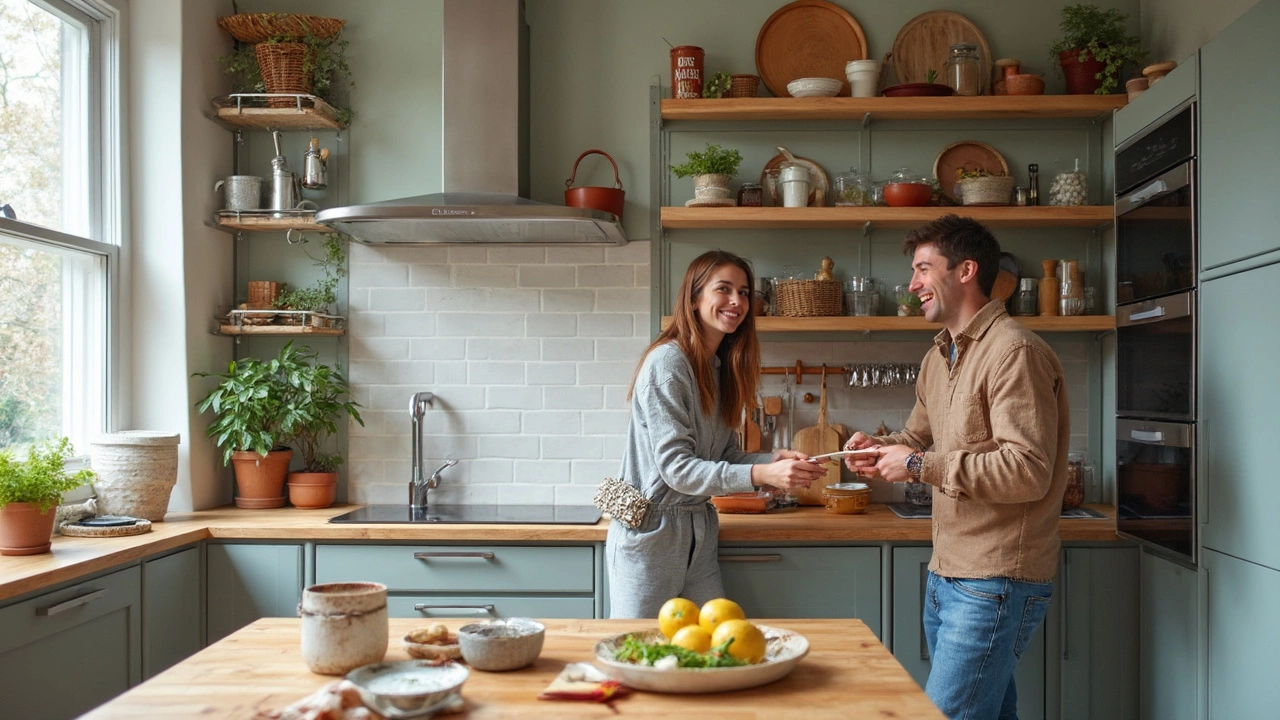
Common Shelving Mistakes
Even folks who swear by staying organized can mess up their shelving game without realizing it. One of the top mistakes is cramming too much stuff onto one shelf. Stacking things until they’re about to fall isn’t just messy—it makes it way harder to find anything later. Plus, shelves that are overloaded end up sagging, especially cheaper ones. According to a 2023 home storage report, over 40% of people admit they store more weight on shelves than the product guidelines allow.
Another issue is putting heavy things up high. Sure, it gets them out of the way, but grabbing a heavy box overhead risks dropping everything—or worse, hurting yourself. Experts usually say the heaviest items should live on the lowest shelves.
Let’s talk about shelf height. Setting shelves too far apart wastes space, while squeezing them too close limits what fits. Adjustable shelving is super handy, but only if you actually adjust the pegs or tracks, not just leave them at whatever height they came from.
Sometimes, people ignore the wall anchors or skip securing shelves to the wall. That’s a risk, especially if you’ve got kids, pets, or if you live in a spot that gets earthquakes. A lot of accidents happen because shelving wasn’t attached properly.
- Cramming items together, making stuff hard to see or reach
- Ignoring weight limits and overloading (see table below!)
- Storing bulky stuff on top shelves
- Not securing — or leveling — shelving units
- Using shelves that are too shallow or deep for your space
| Common Mistake | Potential Problem |
|---|---|
| Exceeding weight limits | Bowed or broken shelves, safety risk |
| Not securing shelving | Units tip over, injury risk |
| Messy arrangement | Hard to find things, looks cluttered |
| Wrong shelf depth | Poor use of space, things fall off |
| Heavy items up high | Hard to reach, more accidents |
Here’s a trick: every few months, check your shelving setup. If you notice items piling up or wobbling shelves, it’s a sign something isn’t working. Stay on top of those small fixes to keep everything neat—and safe.
Creative Shelving Ideas
Rethinking where and how you use shelves can totally open up your home (even if you’re short on space). The cool thing is, there are so many ways to use shelving that go way beyond old-school book racks. Let’s get into some fun and actually useful ideas you can try, no matter your style or budget.
- Floating shelves: These are perfect if you want storage that doesn’t look bulky. They’re a hit in small apartments, especially above desks, beds, or even toilets. Plus, they’re easy to install and don’t eat up floor space.
- Corner shelves: Corners usually get ignored, but a few triangle-shaped shelves can turn them into storage superstars. People use these for displaying plants, spices in the kitchen, or holding keys by the front door.
- Understairs shelving: Got stairs? The space beneath them is a gold mine for storage. Some families create mini libraries or shoe cubbies right under the steps, which is getting more popular as homes get smaller.
- Pegboard wall shelving: This one’s a favorite in craft rooms or garages. You mount a pegboard and add shelves, hooks, or baskets wherever you want. Super flexible and easy to change up if your storage needs grow.
- Kitchen rail shelves: People in Europe have done this for years. Mount a rail with shelves or hooks for mugs, ladles, and tiny pots, saving a ton of cabinet space. Makes everything you need easy to grab while cooking.
When getting creative, it helps to think vertically—most people forget how much unused wall space they have. A 2023 survey by the National Association of Home Builders showed over 60% of small-home owners added vertical shelves to solve clutter issues.
| Shelving Idea | Best Room | Average Cost (USD) |
|---|---|---|
| Floating Shelf | Living Room, Bedroom | 25-60 |
| Corner Shelf | Kitchen, Entry | 15-40 |
| Pegboard Wall | Garage, Office | 30-70 |
| Understairs Shelving | Hallway | 100-400 |
| Kitchen Rail Shelf | Kitchen | 20-45 |
Don’t forget, you don’t need a big budget for cool shelving. Repurpose old ladders as towers, stack wooden crates for a rustic look, or even use old skateboards as shelves (yes, really—teen rooms and dorms love this trick). If you need inspiration, check out social media—Instagram and TikTok are packed with DIY shelving hacks that actually work in regular homes.
Making Shelving Work for You
Your shelves aren’t just for show—they should actually make life easier. The first thing to think about is what you need most often. Those items should always be within easy reach, not stuffed on the top row where you’ll have to grab a step stool every day. A rule of thumb is to put daily use stuff at eye or waist level, so you can grab them in a snap.
One helpful trick is to match shelf type to what you’re storing. Heavy things like kitchen appliances go on sturdy, lower shelves. Lighter items—think decor, baskets, or even seasonal shoes—can go up higher. Open shelves look cool and keep you honest, since you can’t just hide a mess behind doors. But if you want less visual clutter, mix in some baskets or bins to group similar things and hide the odds and ends.
Research shows good storage boosts daily tidiness and can lower stress. A 2023 home organization survey found that 67% of people said adding shelves helped them keep their spaces cleaner. That’s a big jump, especially when you realize how a few simple changes can have a lasting impact.
| Room | Most Useful Shelving Tip | Estimated Time Saved/Week |
|---|---|---|
| Kitchen | Use adjustable shelves for pots and pans | 30 minutes |
| Bathroom | Add floating shelves over toilet for toiletries | 20 minutes |
| Bedroom | Keep everyday wear on open shelving | 25 minutes |
| Living Room | Mix books and decor on deep shelves | 15 minutes |
Want to make your shelving actually work for you? Start with this quick checklist:
- Declutter first—don’t shelve things you don’t use
- Sort by how often you need an item
- Pick a shelf style that fits your room, not just trends
- Keep heavy stuff low and secure
- Add labels or clear bins if you share a space
Don’t overlook how much time you could save just by not digging for stuff. Try tweaking shelf heights or swapping things around every few months. Little changes can make a big difference in how your home—or even your workspace—feels every day.

